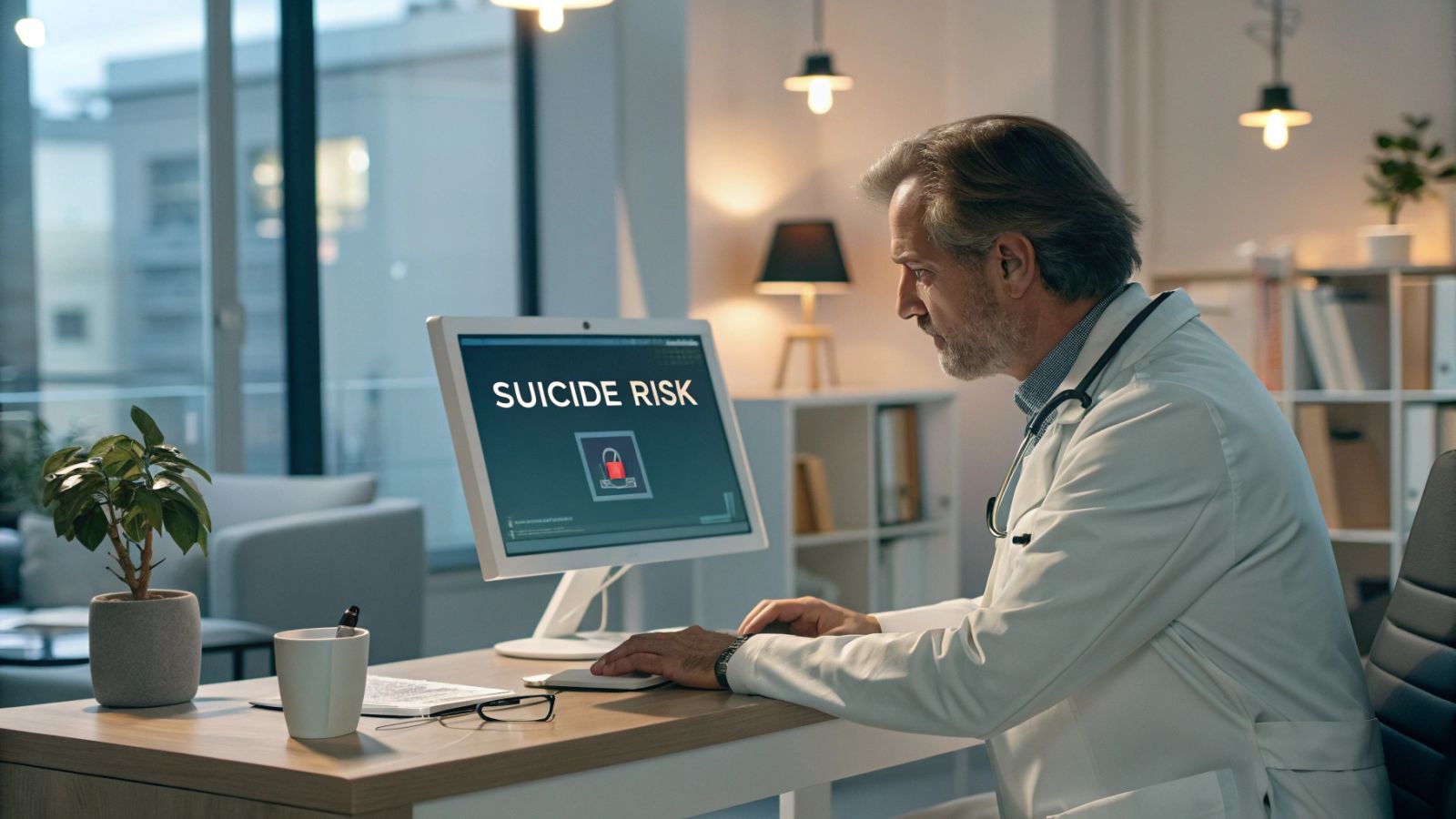This AI helps doctors prevent suicides 🚨
Published by Cédric,
Article author: Cédric DEPOND
Source: JAMA Network Open
Other Languages: FR, DE, ES, PT
Article author: Cédric DEPOND
Source: JAMA Network Open
Other Languages: FR, DE, ES, PT
Follow us on Google News (click on ☆)

Conducted by researchers at Vanderbilt University Medical Center, this study explores the effectiveness of an AI model in suicide prevention: the VSAIL (Vanderbilt Suicide Attempt and Ideation Likelihood model). By analyzing medical data, this system alerts doctors to patients at high risk, paving the way for targeted interventions.
An urgent public health issue
In the United States, suicide is the 11th leading cause of death, with approximately 14.2 deaths per 100,000 people each year. This concerning trend, which has been on the rise for decades, has prompted researchers to explore innovative solutions to better identify and care for at-risk individuals.
It is also noted that about 77% of people who die by suicide have consulted a healthcare professional in the year before their death, often for reasons unrelated to mental health.
These statistics led researchers to create the VSAIL model to address gaps in risk detection. By targeting the most vulnerable patients, this system aims to reduce the number of suicide deaths through early and targeted intervention.
An AI model to target at-risk patients
The VSAIL model uses electronic medical record data to assess suicide risk within 30 days. Tested in three neurology clinics, it successfully identified patients requiring special attention.
The study compared two methods: intrusive alerts interrupting the doctor, and more passive information integrated into the record. Intrusive alerts showed significantly higher effectiveness, prompting doctors to act in 42% of cases.
A selective approach for better prevention
The system flagged about 8% of consultations, targeting the most at-risk patients without overwhelming doctors. This selective approach facilitates its integration into often overburdened medical environments.
Researchers emphasize that this method allows efforts to be focused on the most vulnerable patients, while avoiding universal screening that is difficult to implement.
The challenges of intrusive alerts
Although intrusive alerts are more effective, they risk causing fatigue among doctors due to their frequency. The study authors call for a balance between effectiveness and impact on caregivers' work.
They also suggest that similar systems could be tested in other medical specialties, thereby expanding the scope of suicide prevention.
Promising results for the future
Out of the 7,732 consultations analyzed, 596 alerts were triggered. No suicide attempts were recorded within 30 days following the alerts, although further studies are needed to confirm these results.
Researchers believe that AI, combined with well-designed alerts, could become an essential tool for improving suicide detection and prevention in healthcare settings.